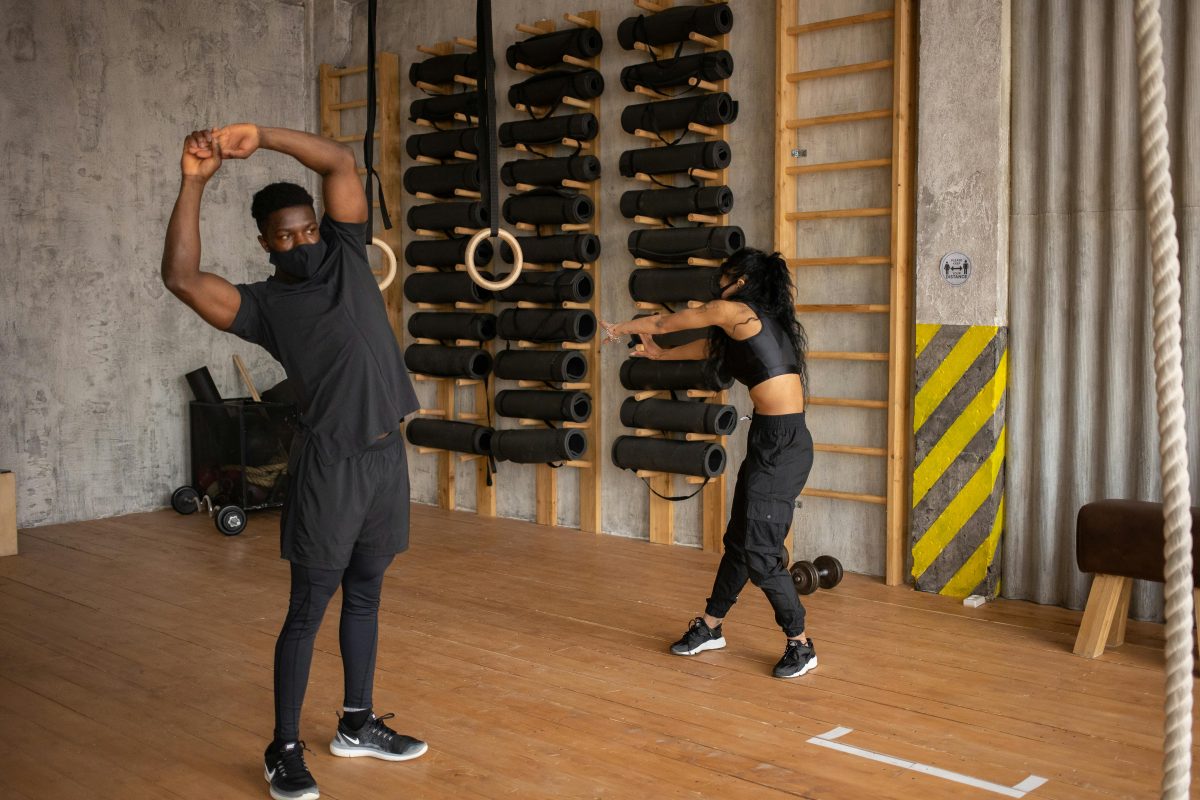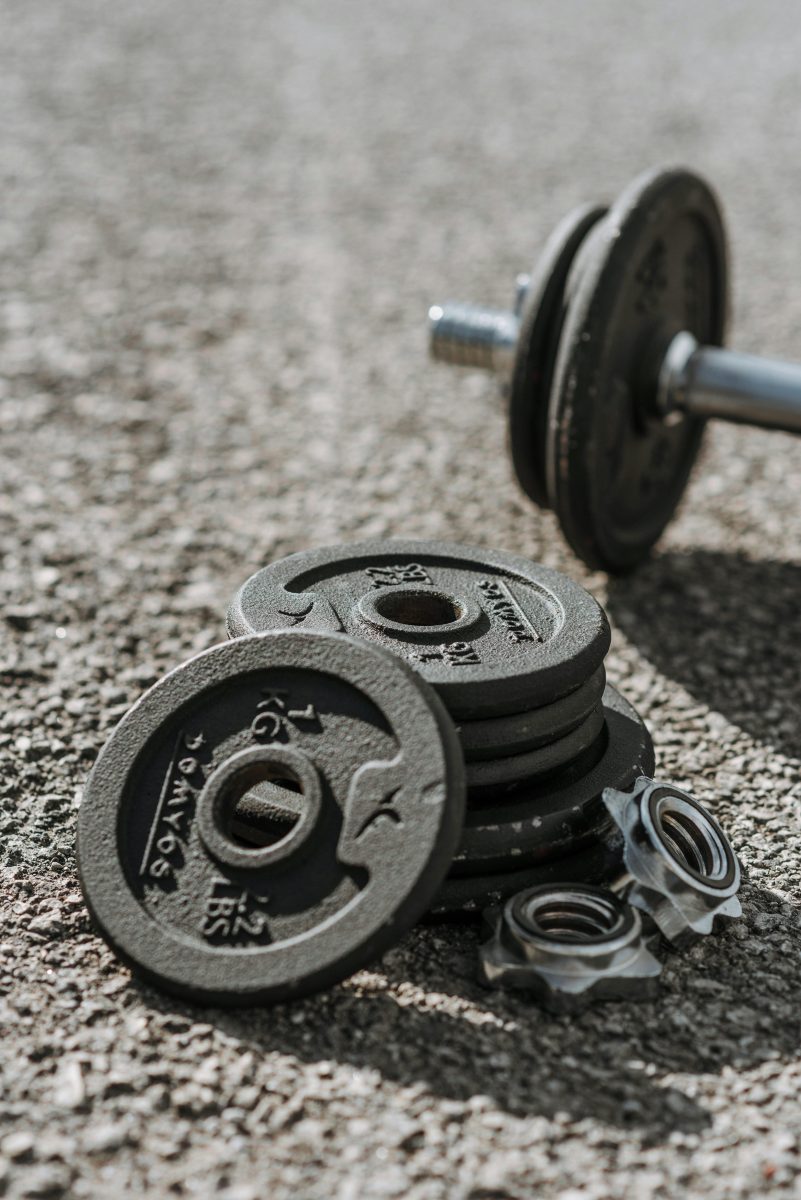Last Updated on: 14th July 2024, 09:29 am
Introduction to Plyometrics

Plyometrics, a dynamic bridge between strength and speed, finds its roots in the 1960s. Originally designed to enhance athletic performance, this training method has evolved. It’s not just for elite athletes; fitness enthusiasts keen on boosting their explosive power also embrace it. The essence of plyometrics lies in its ability to improve speed, power, and agility through movements that mimic sports-specific actions.
- Benefits for Athletes: Leap higher, sprint faster, and outmaneuver opponents with ease.
- Benefits for Fitness Enthusiasts: Enjoy improved muscle tone, stamina, and a noticeable increase in overall strength.
At its core, plyometrics taps into the stretch-shortening cycle of the muscles, enhancing the muscle’s ability to generate force rapidly. This principle is pivotal for developing explosive strength, making plyometrics a cornerstone in the training regimens of those aiming to elevate their physical capabilities.
Through a blend of jumping, bounding, and hopping exercises, plyometrics ignites a transformation in the body’s power output. It’s a testament to how integrating specific, high-intensity movements can lead to significant improvements in physical performance. Whether you’re an athlete aiming for the podium or a fitness enthusiast chasing personal bests, incorporating plyometrics into your routine could be the game-changer you’ve been looking for.
Understanding the Mechanics of Plyometric Training

The magic of plyometric training lies in its unique use of the stretch-shortening cycle (SSC). This cycle is a powerful three-phase process that muscles undergo during explosive movements. Initially, muscles lengthen, storing potential energy. Then, they transition rapidly before shortening with great force. This rapid sequence, when executed through plyometric exercises, significantly enhances muscle power and explosiveness. It’s the secret sauce that makes athletes jump higher and sprint faster.
- Proper Form and Technique: Mastery of these elements ensures safety and maximizes the benefits of each movement.
- Risk of Injury: Without attention to form, the risk of injury escalates, and the potential for improvement diminishes.
When done right, plyometrics can transform an athlete’s performance. It’s not merely about the exercises themselves but understanding and respecting the science behind them. This approach to training invites a remarkable increase in muscle explosiveness, making it a staple for those committed to reaching new heights in their physical capabilities. Embracing plyometrics with diligence and respect for technique opens a world of potential for athletic excellence.
Key Plyometric Exercises for Building Explosive Strength

Plyometric training is a cornerstone for athletes aiming to boost their explosive power. This section delves into the essential exercises that target the lower body, upper body, and core, providing a comprehensive approach to plyometric training.
Lower Body Exercises
- Squat Jumps: Ignite your quads and glutes.
- Box Jumps: Challenge your precision and power.
- Lunge Jumps: Enhance your balance and agility.
Upper Body Exercises
- Plyometric Push-Ups: Demand an explosive push off the ground, targeting your chest, shoulders, and triceps.
- Medicine Ball Throws: Improve your power and coordination, engaging your arms, chest, and core.
Core Exercises
- Plyometric Planks: Add an explosive element to the traditional plank, enhancing core stability and strength.
- Ball Slams: Engage the entire core, back, and shoulders, promoting power and endurance.
Integrating Plyometric Exercises into Your Training Routine
Integrating these exercises into your training routine requires a strategic approach. Start with lower intensity and gradually increase as your body adapts. Incorporate these exercises 2-3 times a week, allowing ample recovery time to prevent overtraining. Focus on form and technique to maximize benefits and minimize the risk of injury. With consistency and dedication, these plyometric exercises will significantly enhance your explosive strength, propelling your athletic performance to new heights.
Remember, the journey to explosive strength through plyometrics is a marathon, not a sprint. Patience, persistence, and precision in executing these exercises will lead to remarkable gains in power and performance. Embrace the challenge, and let the transformative power of plyometrics propel you forward.
Designing a Plyometric Training Program

Embarking on a plyometric training journey begins with a critical step: assessing your current fitness level and setting realistic goals. This foundational phase ensures a tailored approach, aligning the program with your unique capabilities and aspirations. It’s about starting right to finish strong.
Structuring a plyometric workout demands thoughtful consideration of frequency, intensity, and volume. Initially, integrating these exercises 2-3 times a week allows the body to adapt without overtraining. Intensity and volume should gradually increase, calibrated to your evolving fitness level, ensuring continuous progress while minimizing injury risk.
Progression and variation are the heartbeats of an effective plyometric program. They prevent plateaus, keeping the body guessing and muscles adapting. Incorporating a variety of exercises not only reduces boredom but also challenges different muscle groups, enhancing overall explosive strength. This strategic variation ensures sustained improvement and reduces the likelihood of injury, making each session both productive and safe.
Recovery and rest days are not an afterthought but a central component of plyometric training. They allow the body to repair and strengthen, paving the way for performance gains. Ignoring rest can lead to burnout and injury, undermining the very goals you set out to achieve. Embrace recovery as a critical element of your training regimen, ensuring that your efforts in plyometric exercises translate into optimal performance gains.
Designing a plyometric training program is a journey of balance, blending intensity with rest, and progression with safety. It’s a path that leads to explosive strength and unparalleled athletic performance. With a thoughtful approach, the transformative power of plyometrics is within your reach.
Safety Considerations and Injury Prevention in Plyometric Training

Plyometric training, while effective, carries inherent risks if not approached with caution. The high-impact nature of these exercises can lead to injuries, particularly in the lower extremities. Common risks include sprains, strains, and stress fractures, underscoring the need for preventive measures.
Pre-training assessments are crucial. They identify any existing weaknesses or imbalances that could be exacerbated by plyometric exercises. A tailored warm-up routine, focusing on dynamic stretches and low-intensity plyometric drills, prepares the body for the rigors ahead, significantly reducing injury risk.
The choice of footwear and training surfaces cannot be overstated. Proper footwear provides the necessary support and cushioning, absorbing shock and reducing the strain on joints. Similarly, training on appropriate surfaces—preferably those with some give, like grass or specialized sports flooring—minimizes impact forces, further safeguarding against injuries.
Not everyone should engage in plyometric training at full intensity. Modifications or complete avoidance may be necessary for individuals with certain health conditions or those recovering from injury. Listening to one’s body and consulting with a fitness professional can guide these decisions, ensuring that plyometric training enhances, rather than hinders, physical health and performance.
Ultimately, integrating plyometrics into your routine demands a balanced approach. Emphasizing form, technique, and safety can unleash the full potential of plyometric training, propelling you towards your fitness goals without unnecessary setbacks. Remember, the goal is not only to perform better but to do so sustainably, preserving your health and well-being in the process.
Measuring Progress and Adjusting Your Training

Tracking performance is crucial in plyometric training. Utilizing tools like vertical jump tests or timing sprints can provide tangible evidence of improvement. Additionally, fitness apps and wearable technology offer detailed insights into your progress, capturing data on your workouts and highlighting areas for improvement.
- Recognize signs of overtraining: Persistent fatigue, decreased performance, or chronic aches indicate it’s time to adjust your program.
- Adjusting your program: Scaling back intensity or increasing recovery time can help your body bounce back stronger.
Supporting your training goes beyond the gym. Proper nutrition fuels your body, while hydration keeps it functioning at its peak.
- Nutrition: A balanced diet rich in proteins, carbohydrates, and healthy fats provides the energy needed for explosive movements.
- Hydration: Staying hydrated ensures that every cell in your body can perform optimally during your plyometric sessions.
Remember, the key to plyometric success is a blend of smart training, vigilant self-monitoring, and consistent nutritional support. By measuring progress and listening to your body, you can tailor your training for peak performance and longevity in the sport.
Plyometrics Beyond the Gym: Application in Sports and Everyday Life

Athletes across various sports harness the power of plyometrics to catapult their performance to new heights. From basketball players improving their vertical leap to soccer players enhancing their agility, plyometric training is a universal tool for performance enhancement. It’s the secret ingredient that allows athletes to outperform, outlast, and outmaneuver their competition.
- Benefits for non-athletes: Improved functional strength and a reduced risk of injury are among the top advantages.
- Strengthening for daily life: By simulating everyday movements with added intensity, plyometrics strengthens the body for the rigors of daily life, from carrying groceries to sprinting to catch a bus.
Incorporating plyometric principles into daily activities can transform mundane tasks into opportunities for health and fitness sustainability. Simple modifications, like taking the stairs two at a time or adding a jump to your step, can integrate plyometric benefits into your routine. It’s about making fitness a natural part of your day, not an isolated activity confined to the gym.
Whether you’re an elite athlete aiming for the podium or someone seeking to enhance your physical well-being, plyometrics offers a path to achieving your goals. Its principles, when applied consistently, can lead to remarkable improvements in strength, speed, and overall fitness. Embrace plyometrics, and let it propel you toward a healthier, more vibrant life.
In Closing
Plyometrics unlocks explosive strength for all. It bridges the gap between ambition and physical prowess. Through meticulous training and a focus on form, individuals can transform their athletic performance, embracing both the rigor and rewards of this dynamic discipline. As we look ahead, let the principles of plyometrics guide you to new peaks of fitness and functionality, inviting you to leap into a future where your potential knows no bounds.
Plyometrics: Jump Training for Explosive Strength FAQs
Yes, there are risks associated with plyometric training, particularly if exercises are performed with poor form or without proper progression. The high-impact nature of plyometrics can increase the risk of injury to the joints, tendons, and muscles. It’s important to start slowly, focus on technique, and gradually increase intensity.
Yes, beginners can do plyometric exercises, but they should start with low-intensity variations and gradually increase the intensity as their fitness improves. It’s important for beginners to focus on proper form and technique to avoid injury. Starting with basic exercises like squat jumps or box step-ups can help build a foundation for more advanced plyometric movements.
Plyometrics can help with weight loss as part of a comprehensive fitness program. These high-intensity exercises burn calories both during and after the workout due to the elevated metabolic rate from the intense effort. However, nutrition and overall lifestyle choices also play significant roles in weight loss.
Proper form is crucial in plyometric exercises to maximize benefits and minimize injury risk. Key indicators of correct form include landing softly on the balls of your feet, keeping knees in line with toes, and maintaining control throughout the movement. Consulting with a fitness professional or using instructional videos can also help ensure techniques are performed correctly.
Plyometrics improves athletic performance by enhancing the body’s ability to generate force quickly. By training the neuromuscular system to produce fast, powerful movements, athletes can improve their speed, agility, and power. This is crucial for sports requiring explosive actions, such as basketball, soccer, and track and field.
Plyometrics should be done 2-3 times per week to allow adequate recovery between sessions. Incorporating these exercises into a balanced training program can help maximize gains in power and strength. Rest days are important to prevent overtraining and reduce the risk of injury.
Common plyometric exercises include jump squats, box jumps, lunge jumps, and burpees. These exercises are designed to improve explosive power by rapidly stretching and contracting the muscles. They can be modified to suit different fitness levels and goals.
Minimal equipment is needed for plyometric training, making it accessible for many people. Basic exercises can be performed with just your body weight, while more advanced variations might use boxes, hurdles, or medicine balls. The focus is on using explosive movements to train the muscles, not on the equipment.
Plyometrics, also known as jump training, is a form of exercise designed to increase explosive power and strength through high-intensity movements like jumping. These exercises focus on stretching the muscles before quickly contracting them, improving muscle power. It’s widely used by athletes to improve performance in sports that require speed and power.
The main difference between plyometrics and traditional strength training is the focus on explosive power in plyometrics versus muscular strength and endurance in strength training. Plyometrics involves rapid stretching and contracting of muscles to increase power, while traditional strength training focuses on lifting weights to increase muscle mass and strength. Both forms of training can complement each other in a well-rounded fitness program.
Orlando is a all round athlete from Australia, now resident in Germany. His sports of passion of American Football(Offensive line), weight training and indoor rock climbing where he uses his 195cm wing span to his advantage.



